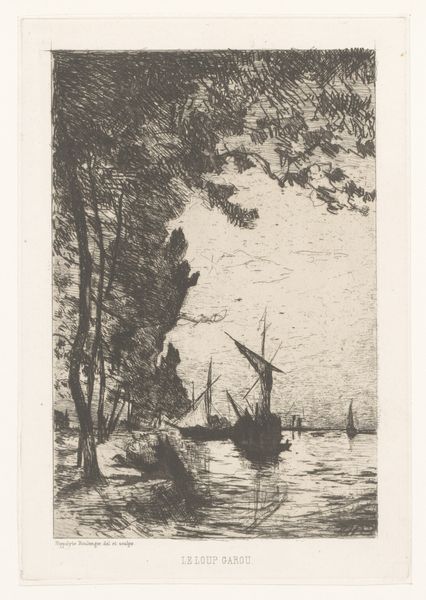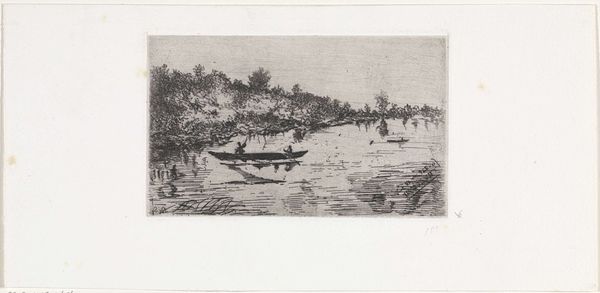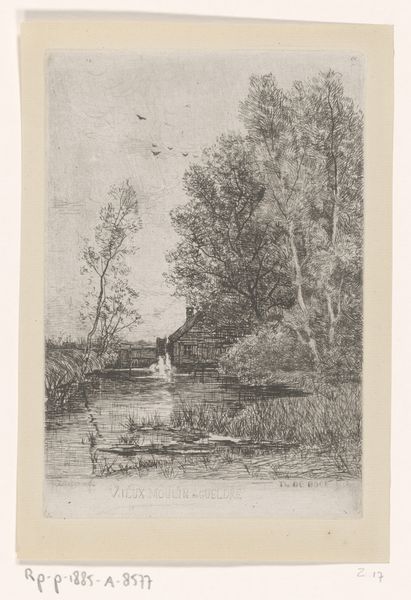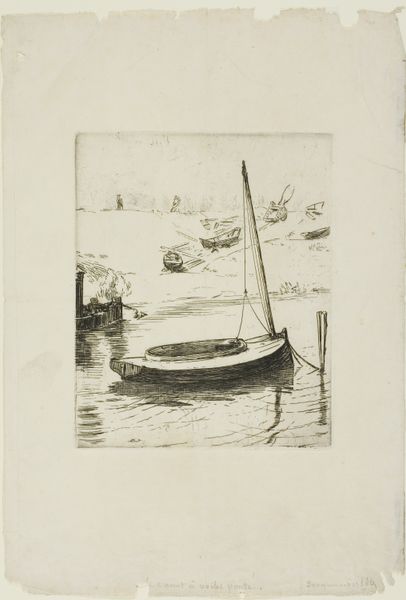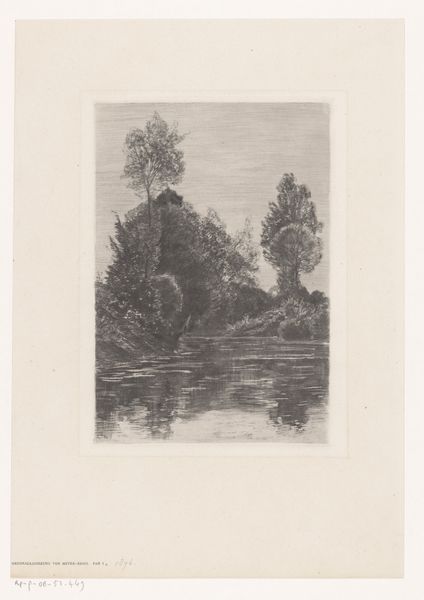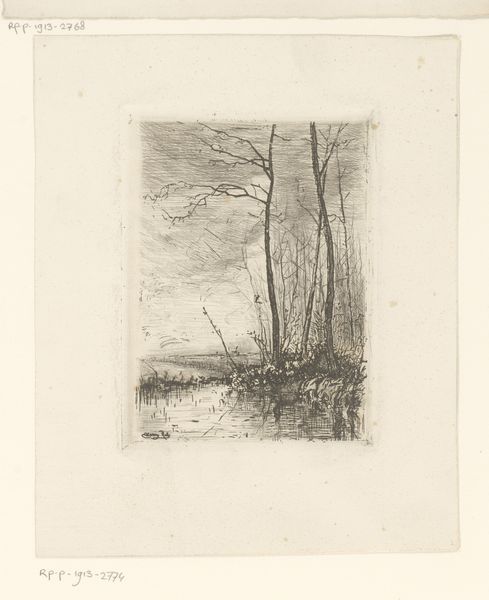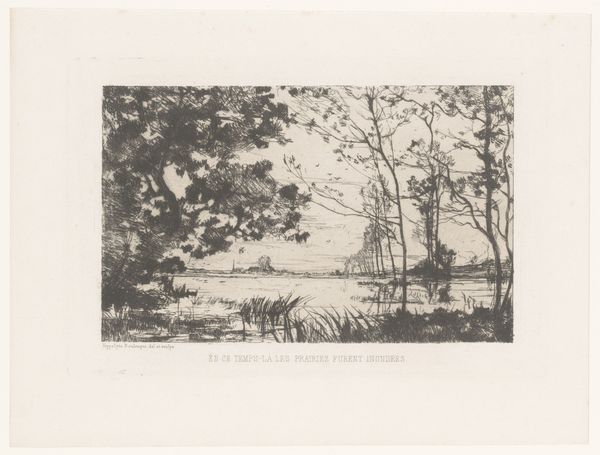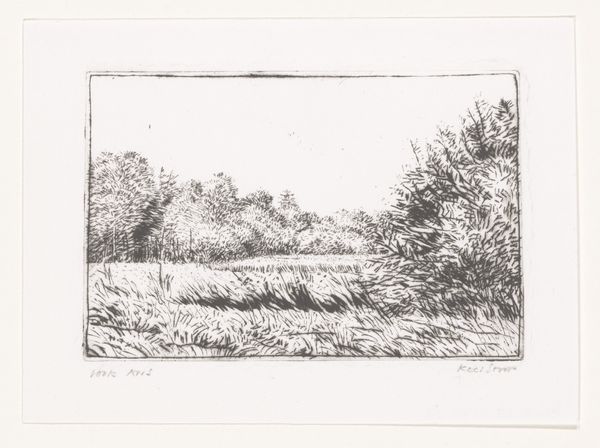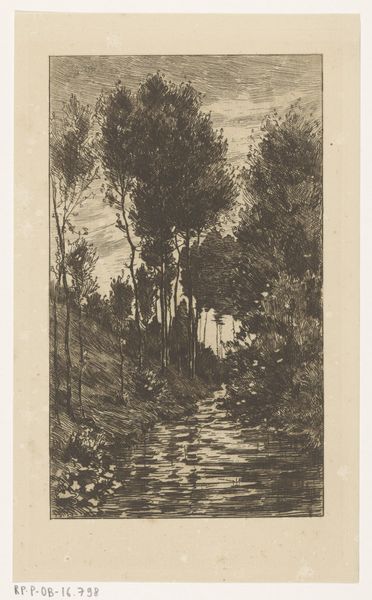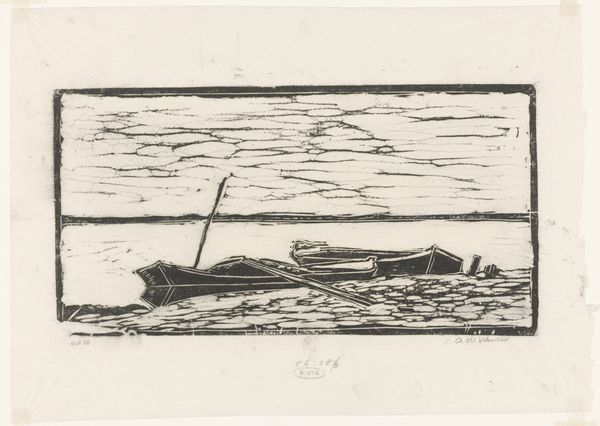
drawing, print, etching
#
vegetal
#
pencil drawn
#
drawing
#
natural shape and form
#
light pencil work
#
natural tone
# print
#
impressionism
#
etching
#
pencil sketch
#
old engraving style
#
landscape
#
pencil drawing
#
intimism
#
pencil work
#
remaining negative space
#
monochrome
Dimensions: height 158 mm, width 130 mm
Copyright: Rijks Museum: Open Domain
Curator: This is "Schuitje op een vijver met knotwilgen langs de oever," which roughly translates to "Boat on a pond with pollard willows along the bank," an etching by Henry Bosch created sometime between 1878 and 1895. Editor: It has such a melancholic air, don’t you think? A lone boat adrift on the still water, shrouded by those heavy trees. The textures of the etching—that tight, swirling hatching—evoke a profound stillness. Curator: Indeed. The artist’s mastery of line is quite apparent. Note how he uses the density of the lines to create tonal variation and describe form. The reflections in the water, for instance, are rendered with a delicate touch that suggests both the surface texture and the light. Editor: Yet this isn't just a neutral study of light and form. Consider Bosch's position within the late 19th-century Dutch art scene, marked by industrialization and urbanization. This seemingly simple scene could be interpreted as a subtle critique of that era—a yearning for a simpler, agrarian past before industrialization fully seized Holland. The image exudes that sentiment of longing for simpler times, or even the passing of older lifestyles connected with canals. Curator: While I appreciate that interpretation, I think it’s important not to overlook the pure formal elements at play. The composition, for example, is exquisitely balanced. The verticality of the pollard willows against the horizontality of the water… it creates a harmonious, almost classical structure. Editor: And I believe that structure gains even greater depth once you analyze the context within which the art was conceived. Where does Bosch belong? Who was he creating for? These aren’t merely stylistic choices but represent a political stance, and it can easily tie into artistic statements of the time. Curator: Perhaps. However, what I find truly compelling is the artwork’s timelessness. Even without any contextual understanding, the arrangement, harmony and tone retain the essence of artistry. Editor: Precisely! This intersection – its enduring appeal with the cultural conversations, the formal qualities reflecting something deep within human experience — offers a richer understanding. Both dimensions allow a greater insight. Curator: Well articulated, I appreciate how looking through an artistic, as well as a societal, lens can uncover many layers within a piece such as this one. Editor: Absolutely, looking at a single scene with myriad perspectives deepens our view of artistic pieces throughout time.
Comments
No comments
Be the first to comment and join the conversation on the ultimate creative platform.

